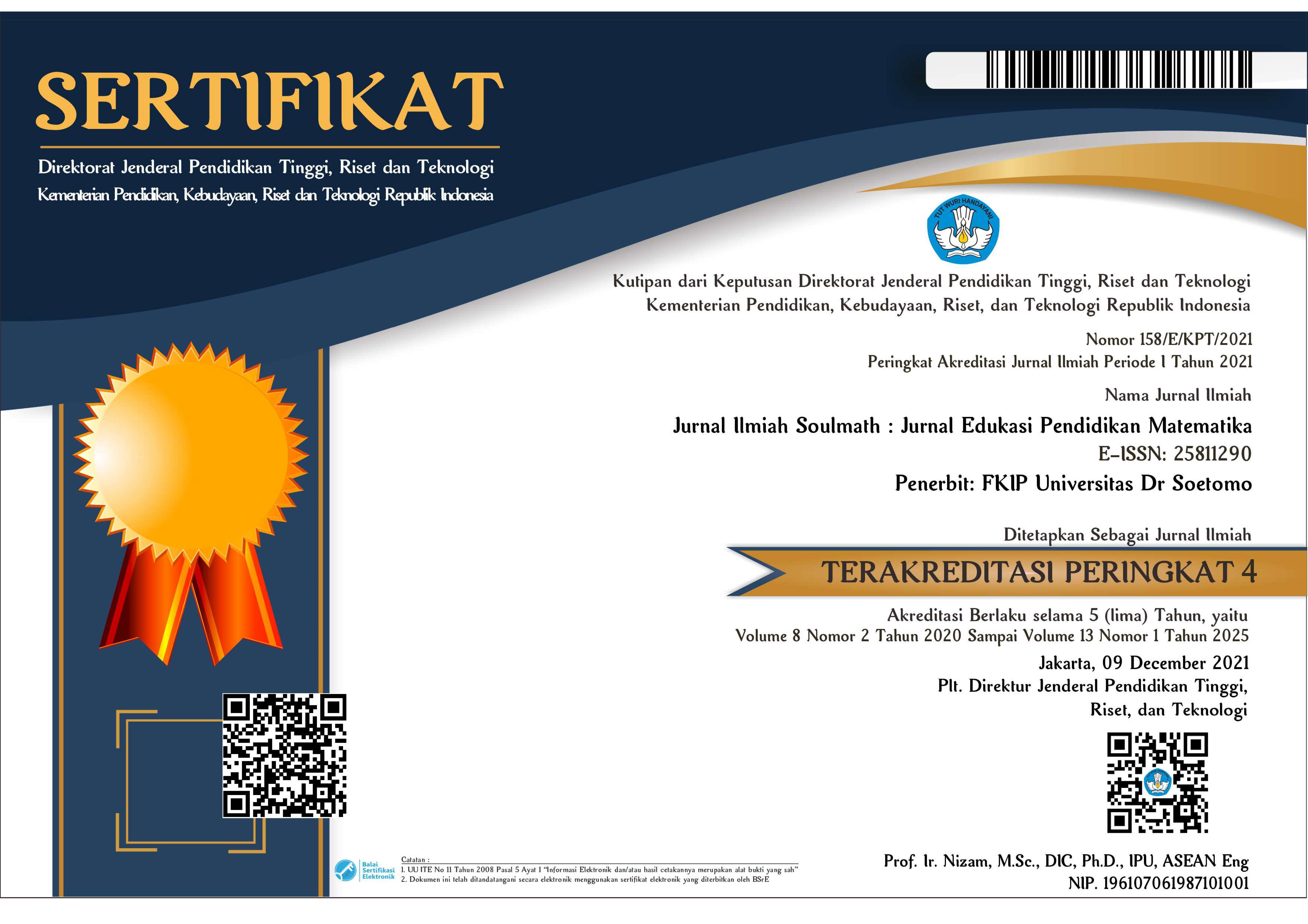An Investigation of Students’ Difficulties in Statistics Learning on Online Based Learning at Universitas Terbuka Taiwan
 Abstract views: 242
,
Abstract views: 242
,
 4620 publish downloads: 115
4620 publish downloads: 115
Abstract
This study aims to determine the students’ difficulties in online learning. Online learning is one solution offered by several parties such as the government, universities, and teachers. However, this has not been fully able to help students understand the statistics well. This study investigates students’ difficulties in terms of topics, learning processes, and assignments. The students have taken statistics courses for one semester. The data collection techniques with open questionnaires via google Forms and online interviews. The number of participants for open questionnaires was 25 students and 6 students were taken to be interviewed. Based on the questionnaires and interviews conducted with students, the results of the study are that students still have difficulty in understanding the material itself because of complicated calculations, complicated formulas, and Unrealistic. While the difficulties of students in online learning are limited time, network problems, explanations and examples of questions are not written in detail in online learning, the strategies used in online learning make some students negligent in learning, and the number of online meetings is still lacking, online learning can be helpful but not maximized. Moreover, students’ difficulties with assignments such as the formula are very much, the book has several errors, students do not understand the stages in solving problems, difficulty in determining the symbols used in the story problem, difficulty in calculating it, difficulty in imagining the application of the formula into real life. The recommendation from this study is the statistics teacher can choose the appropriate learning model for statistics courses.
Keywords: Students’ Difficulties, Statistics Learning, Online Learning
Downloads
References
R. Kuba, S. Rahimi, G. Smith, V. Shute, and C. P. Dai, “Using the first principles of instruction and multimedia learning principles to design and develop in-game learning support videos,†Educ. Technol. Res. Dev., vol. 69, no. 2, pp. 1201–1220, 2021, doi: 10.1007/s11423-021-09994-3.
T. Koparan, “Difficulties in learning and teaching statistics: teacher views,†Int. J. Math. Educ. Sci. Technol., vol. 46, no. 1, pp. 94–104, 2015, doi: 10.1080/0020739X.2014.941425.
O. Fitzmaurice, A. Leavy, and A. Hannigan, “Why is statistics perceived as difficult and can practice during training change perceptions? Insights from a prospective mathematics teacher,†Teach. Math. its Appl., vol. 33, no. 4, pp. 230–248, 2013, doi: 10.1093/teamat/hru010.
L. Huang, “A mixed method investigation of social science graduate students’ statistics anxiety conditions before and after the introductory statistics course,†Int. J. High. Educ., vol. 7, no. 3, pp. 156–162, 2018, doi: 10.5430/ijhe.v7n3p156.
E. Bettinger, C. Doss, S. Loeb, A. Rogers, and E. Taylor, “The effects of class size in online college courses: Experimental evidence,†Econ. Educ. Rev., vol. 58, pp. 68–85, 2017, doi: 10.1016/j.econedurev.2017.03.006.
S. Moghavvemi, A. Sulaiman, N. I. Jaafar, and N. Kasem, “Social media as a complementary learning tool for teaching and learning: The case of youtube,†Int. J. Manag. Educ., vol. 16, no. 1, pp. 37–42, 2018, doi: 10.1016/j.ijme.2017.12.001.
A. P. Lopes and F. Soares, “Perception and performance in a flipped Financial Mathematics classroom,†Int. J. Manag. Educ., vol. 16, no. 1, pp. 105–113, 2018, doi: 10.1016/j.ijme.2018.01.001.
M. K. Khorasani, “An Online Approach to Teaching Mathematic Formula Through Introducing Web-Page Links,†Procedia - Soc. Behav. Sci., vol. 46, pp. 3546–3550, 2012, doi: 10.1016/j.sbspro.2012.06.102.
T. A. DeVaney, “Anxiety and attitude of graduate students in On-Campus vs. online statistics courses,†J. Stat. Educ., vol. 18, no. 1, pp. 1–15, 2010, doi: 10.1080/10691898.2010.11889472.
F. G. Becker et al., Qualitative Research from Start to Finish, vol. 7, no. 1. 2015. [Online]. Available: https://www.researchgate.net/publication/269107473_What_is_governance/link/548173090cf22525dcb61443/download%0Ahttp://www.econ.upf.edu/~reynal/Civil wars_12December2010.pdf%0Ahttps://think-asia.org/handle/11540/8282%0Ahttps://www.jstor.org/stable/41857625
R. B. Ayu, “Analisis Kesulitan Mahasiswa dalam Belajar Statistika di Program Studi Tadris Matematika UIN Mataram,†Skripsi, no. 2, pp. 1–13, 2019.
D. Ririen and D. Hartika, “Identifikasi Kesulitan Belajar Mahasiswa pada Mata Kuliah Statistika Selama Masa Pandemi Covid-I9,†J. Ilm. Univ. Batanghari Jambi, vol. 21, no. 1, p. 148, 2021, doi: 10.33087/jiubj.v21i1.1236.
R. Maysani and H. Pujiastuti, “Analisis Kesulitan Mahasiswa Dalam Mata Kuliah Statistika Deskriptif,†Al Khawarizmi J. Pendidik. dan Pembelajaran Mat., vol. 4, no. 1, p. 32, 2020, doi: 10.22373/jppm.v4i1.6949.
M. Turmuzi, A. S. H. Dasing, Baidowi, and Junaidi, “Analisis Kesulitan Belajar Mahasiswa Secara Online (E-Learning) Selama Masa Pandemi Covid-19,†Edukatif J. Ilmu Pendidik., vol. 3, no. 3, pp. 900–910, 2021.







